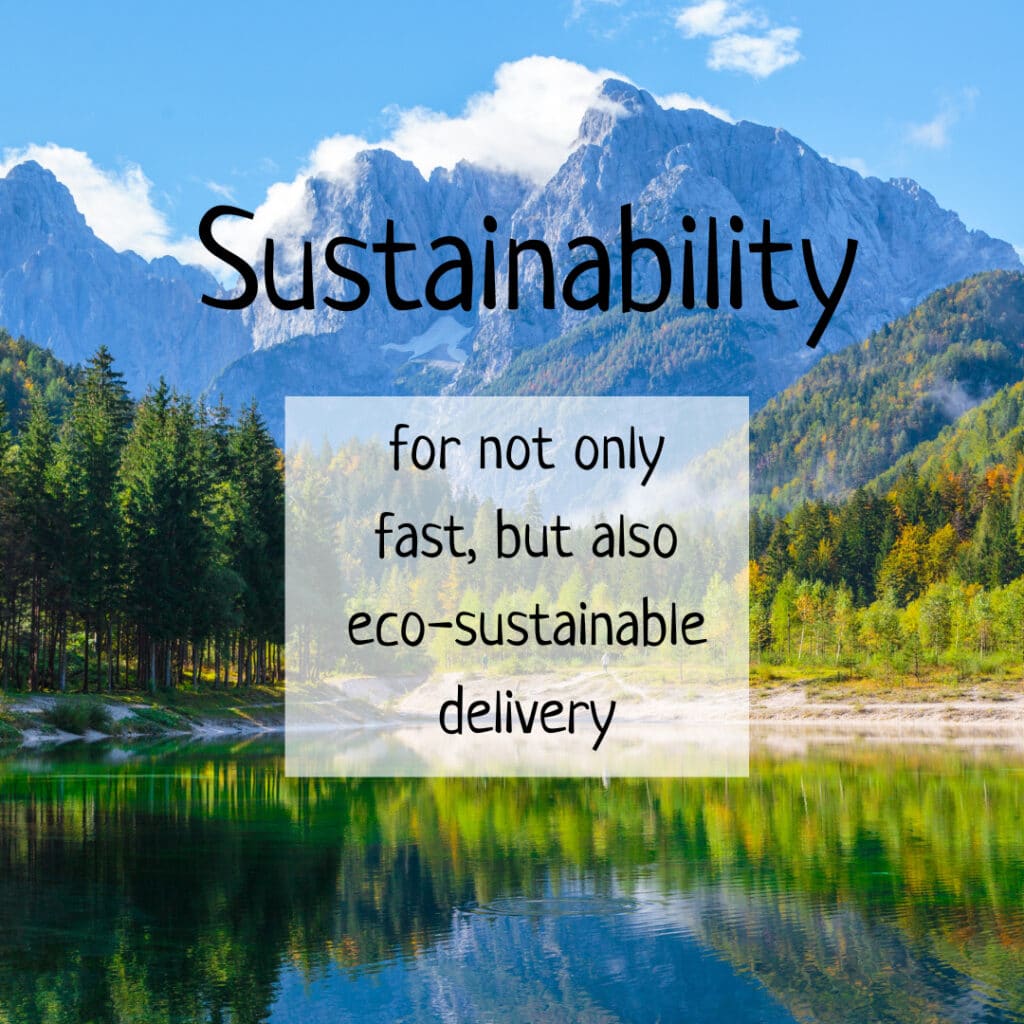In the era of e-commerce and globalisation, the shipping of goods has become a crucial component of the global economy. However, this exponential increase in shipping has a significant impact on the environment, raising urgent concerns about sustainability.
How to ship sustainably then?
In this context, the following article explores innovative strategies and emerging practices to make shipping more sustainable. We will address how companies, large and small, are adopting eco-friendly approaches to reduce the environmental impact of their logistics operations.
From the use of biodegradable and recycled packaging materials, to the implementation of optimised logistics systems to reduce CO2 emissions, we will examine a variety of methods that are shaping the future of sustainable shipping.
Sustainable shipping is not only an ethical responsibility, but also an innovative opportunity for companies to reduce environmental impact and increase operational efficiency. So let’s see how to ship sustainably.
Sustainable deliveries: efficiency and sustainability
What is sustainable packaging?
What are the most sustainable means of transport?
Sustainable deliveries: efficiency and sustainability
In the modern world, where shipping efficiency is paramount, the importance of sustainable shipping has emerging as a crucial issue.
This concept is not only about reducing the environmental impact of deliveries, but embraces operational efficiency and social responsibility as well.
Sustainable shipping involves adopting practices that reduce greenhouse gas emissions, optimise resource use and promote equity in the supply chain.
But let’s see how to ship sustainably in details.
A key aspect here is the use of environmentally friendly vehicles, such as electric vehicles, which can significantly reduce the CO2 emissions associated with deliveries.
Furthermore, optimising delivery routes through advanced technologies can reduce the number of trips required, further decreasing the carbon footprint.
From the point of view of social sustainability, the adoption of transparency and traceability policies along the supply chain ensures that products are transported responsibly, strengthening consumer confidence and promoting a sustainable business model.
Finally, the choice of sustainable packaging materials such as the adoption of recycled or biodegradable materials not only reduces waste production, but also helps to raise consumer awareness as for the importance of sustainability.
Through these strategies, sustainable shipping is becoming not only an ethical imperative, but also a competitive advantage for forward-looking companies.
What is sustainable packaging?
In the context of sustainable shipping, a key aspect is the choice of packaging. Understanding how to make a product sustainable inevitably goes through the selection of environmentally friendly packaging materials, reducing the ecological impact of the entire shipping process.
Sustainable packaging is designed to be resource-efficient, minimising the use of materials and favouring recycled, recyclable or biodegradable materials.
For example, using recycled cardboard or compostable materials for packaging can significantly reduce a product’s carbon footprint.
In addition, innovation in packaging design, such as reducing the size or eliminating unnecessary components, helps to reduce waste generation and resource use.
To understand how to ship sustainably, companies are also exploring reusable packaging solutions. These systems, which can be returned and reused several times, offer an environmentally friendly alternative to disposable packaging.
In addition, the adoption of ‘smart’ packaging that uses advanced materials to maintain the freshness of products can reduce the need for further energy-consuming refrigerated shipments.
Another important aspect is the transparency and traceability of packaging. Providing clear information about the origin of materials and recycling instructions helps consumers to make responsible decisions, promoting a sustainable product life cycle. In this way, companies not only demonstrate a commitment to sustainability, but also encourage consumers to be an active part of the process.
Through innovation and responsibility, packaging can be transformed from a simple container into a tool for sustainability, contributing significantly to reducing the environmental impact of shipments.
What are the most sustainable means of transport?
In sustainable shipping, the choice of means of transport plays a crucial role. The most sustainable means of transport are those that minimise greenhouse gas emissions and reduce environmental impact.
As we have seen, among these, electric vehicles are gaining in popularity due to their ability to operate without direct CO2 emissions. Although their environmental impact depends on the energy source used to recharge them, in general, they are a greener choice than traditional internal combustion vehicles.
Would you like to stay up-to-date with the latest news on sustainable delivery? Visit the Sinergy Solution website.


